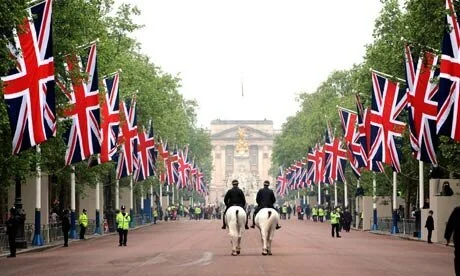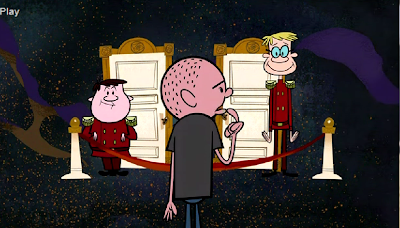Flags of a British Republic
The Royal Wedding of Prince William and Kate Middleton has once again set in motion an age-old British debate: whether or not to retain the monarchy. Should the system, reminiscent of Europe's ancien regime be scrapped and replaced with a republican model more in tune with the modern world? I retain my thoughts and have my own opinions, but rather than get into a political discussion, I saw a chance to start off a series of vexillological articles instead.
Vexillological = related to flags, for those not familiar with the term. Just sounds like a better adjective to me than 'flagish'...
The UK has of course had a republican period, where it was of course not called the United Kingdom. From 1649 to 1660, British territory, previously ruled by the executed king, Charles I, was run by a Council of State in conjunction with the parliament as the Commonwealth (1649-1653 and 1659-1660), and by a 'Lord Protector' in fractious conjunction with the parliament as the Protectorate (1653-1659). During such time, they experimented with a series of different flags.
The Commonwealth initially excluded Scotland and thus combined only the flags of England and Ireland to make the above flag, which was used until around 1651.
From 1651, the Commonwealth militarily occupied much of Scotland (it was formally annexed in 1654) and so issued a new flag, somewhat similar to the previous British flag but without the combination seen before, perhaps as an attempt to pacify the Scots, who felt that the previous flag gave too much prominence to England's Cross of St George. This flag continued to be used well into the years of the Protectorate.
In 1658, Lord Protector Oliver Cromwell, who had reigned from 1653, decided to give more prominence to his own personal standard, effectively elevating it to the status of the Protectorate's national flag. It was a restoration of the previous Union Flag with the harp of Ireland added to the center. Following the restoration of the monarchy in 1660, the Union Flag was also restored and all symbols of Britain's 'Interregnum' were purposefully destroyed.
Except for the Interregnum, Britain has only ever had one widely-used republican flag, the one used by Chartists and Radicals during the nineteenth century, as can be seen above. While it's origins are hazy, it is believed that the colors are symbolic of England (red), Scotland (white) and Ireland (green). This flag has dubious value for twenty-first century British republicans for a number of reasons:
These days, in part due to people's familiarity with the Union Flag, blue would be considered a far more symbolic color of Scotland than white, which is commonly seen on the uniforms of English sports teams.
The necessity to include green for Ireland has subsided significantly since the withdrawal of the majority of Ireland from Britain in the early part of the twentieth century.
It is identical in appearance to the modern flag of Hungary. Every nation desires a unique flag and from nearly 200 countries in the world, there is only one instance of two having the same flag: Romania and Chad.
Having trawled the internet looking for suggestions, it seems that the flag of the United Kingdom is about the only thing that republicans do not dispute. Perhaps, as one of the most famous flags in the world, it is considered too powerful of a brand to throw away? My search only turned up one solid suggestion, which was to replicate the colors of the republican flag by switching the blue of the Union Flag to green, as seen below:
I can't speak for others, but it doesn't seem like much of a change to me. In fact it seems much more like something from an Andy Warhol painting. I believe that a change would have to be significant to be worth the hassle, and given the lack of any real monarchical symbols on the Union Flag, should the republicans ever have their day, the president's wedding is just as likely as Prince William's to be donned with the current flag.
Any thoughts or criticisms are, as always, much welcomed and appreciated...
This post was imported from my Wordpress, which I used for my first ever blog in 2011.







